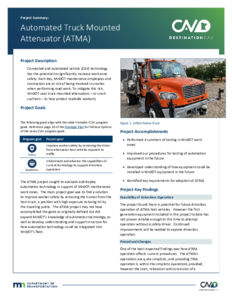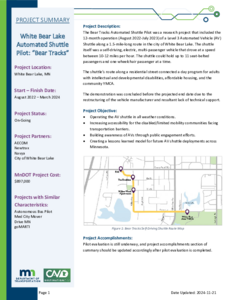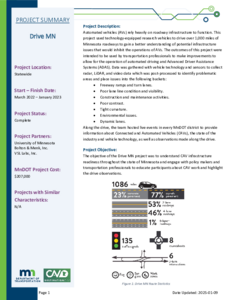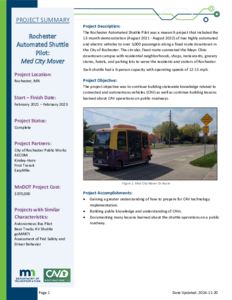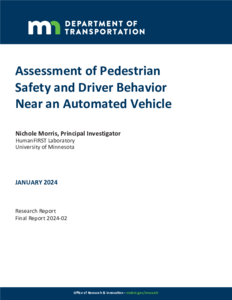Project Summary: Automated Truck Mounted Attenuator (ATMA)
Date Created
2025
Report Number
2025-26
Description
Project Summary: Community Driven CAV
Date Created
2025-02
Report Number
2025-20
Description
Assessment of Pedestrian Safety and Driver Behavior Near an Automated Vehicle
Date Created
2024-01
Report Number
2024-02
Description


